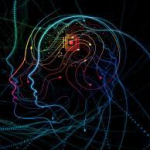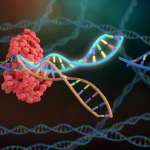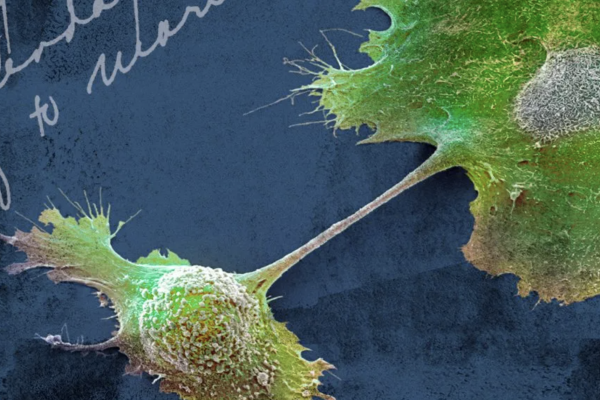by: Niharika Desaraju
In recent years, the world’s perception of transgender people has significantly transformed, with celebrities such as Caitlyn Jenner and Laverne Cox gaining popularity as the faces of this minority. Although society has begun to understand and accept the transgender community, scientists have yet to understand any underlying similarities and differences between the structure and function of the brains of trans- and cisgender individuals. Recently, however, techniques such as functional magnetic resonance imaging (fMRI) have begun to help researchers identify these similarities and differences. This research could lead to a biological understanding of the difference between one’s gender identity and natal sex, the gender determined upon a baby’s birth.
Since the 1980’s, some scientists have argued that the way children are raised influences the behavioral differences between girls and boys. One famous proponent of this theory was psychologist John Money. He theorized that a male baby with a congenital abnormality of the penis, or one who had lost his in a surgical accident, could be raised as female with surgery and treatment with hormones. This theory, however, backfired when the subject later committed suicide after living as a man during his teen years. Recently, the idea that there are sex differences in the brain is agreed upon, but the way in which these differences arise from biological versus social factors is hotly under debate.
One prominent theory regarding gender dysphoria is that the sexual differentiation of the genitals occurs separately from the sexual differentiation of the brain in utero. Animal studies have shown that the genitals and the brain acquire masculine or feminine traits at different stages of development indicating that it is possible for the body to go in two seperate directions. This is further supported by human studies which show that in transgender people, the size of the central subdivision of the bed nucleus of the stria terminalis (BSTc or BNSTc), a sexually dimorphic area in the forebrain known to be important to sexual behavior, more closely resembles that of cis people who share the subjects’ gender than those of the subject’s natal sex.
There are, however, other studies that show that there are parts of the transgender brain that more closely resemble that of their natal sex. A 2015 study from the Netherlands Institute for Neuroscience showed similarities in the hypothalami and the cerebellums of the transgender subjects and cisgender participants of the same natal sex. A 2013 study from the National Distance Education University in Spain that focused on cortical thickness also resulted in mixed results. In the right putamen- a structure in the forebrain- transgender men had similar cortical thickness in comparison to cisgender men, but transgender women showed no significant differences from either cisgender group.
Long story short, gender identity is complicated. Baudewijntje Kreukels, who studies gender incongruence at VU University Medical Center in Amsterdam, says “Gender dysphoria is likely based upon a combination of biological, social, and psychological factors,” meaning even a deep understanding of prenatal environments only accounts for one component of a significantly more complicated phenomenon. For example, a study by the Karolinska Institute in Sweden showed that two brain regions, the thalamus and putamen, were smaller in transgender people than in cisgender people, but the overall gray matter volumes were same. These brain regions “mediate perception of the body” according to neuroscientist Ivanka Savic, and show that transgenderism is influenced by more than a mismatch between the sex of your brain and the sex of your body. In fact, it represents a fundamental difference between the experiences of cisgender and transgender individuals: the feeling of not belonging in your own body.
Although this research has attempted to provide scientists with a better understanding of gender dysphoria, it is difficult to interpret results because scientists aren’t sure when these differences developed. According to Sven Muller, a psychologist at the Ghent University in Belgium, “the brain is very plastic in adulthood,” indicating these differences may or may not have been present since birth. It is also logistically very challenging to recruit enough subjects to conduct studies with high statistical power, though ENIGMA Consortium, a company which promotes networking and information sharing, launched a new transgender working group in 2017 attempting to sequence and analyze the genes of thousands of cis- and transgender people.
Lastly, researchers still have many questions. They are still not aware if male-to-female and female-to-male transsexualism is the same phenomenon, or if they are fundamentally different processes. They are also curious about the difference in the brains between those who develop gender dysphoria early in life versus during adolescence and adulthood, as well as the differences in the brains of transgender people with different sexual orientations.
While we are still a long way off from understanding the transgender brain, research in this field could lead to a better understanding of not only gender dysphoria but also gender in general. A fundamental attribute of humans, gender is significant both evolutionarily and socially. For purposes more than just academic, a deeper understanding of these neural mechanisms can help gender identity become a less charged issue. “This is just part of the biology”, says Savic, “the same way as I have black hair and somebody has red hair.”
Image by Delia Giandeini on Unsplash







